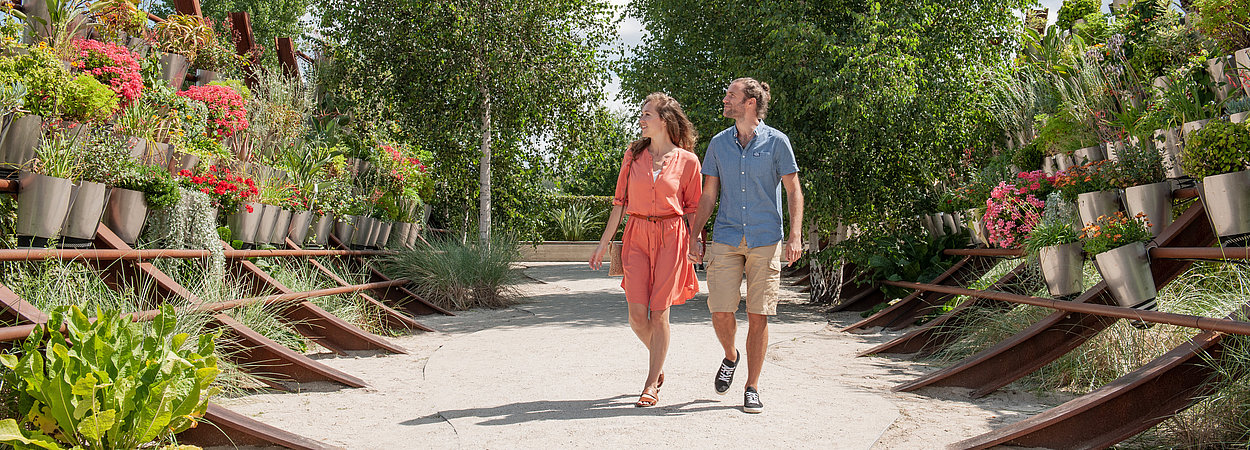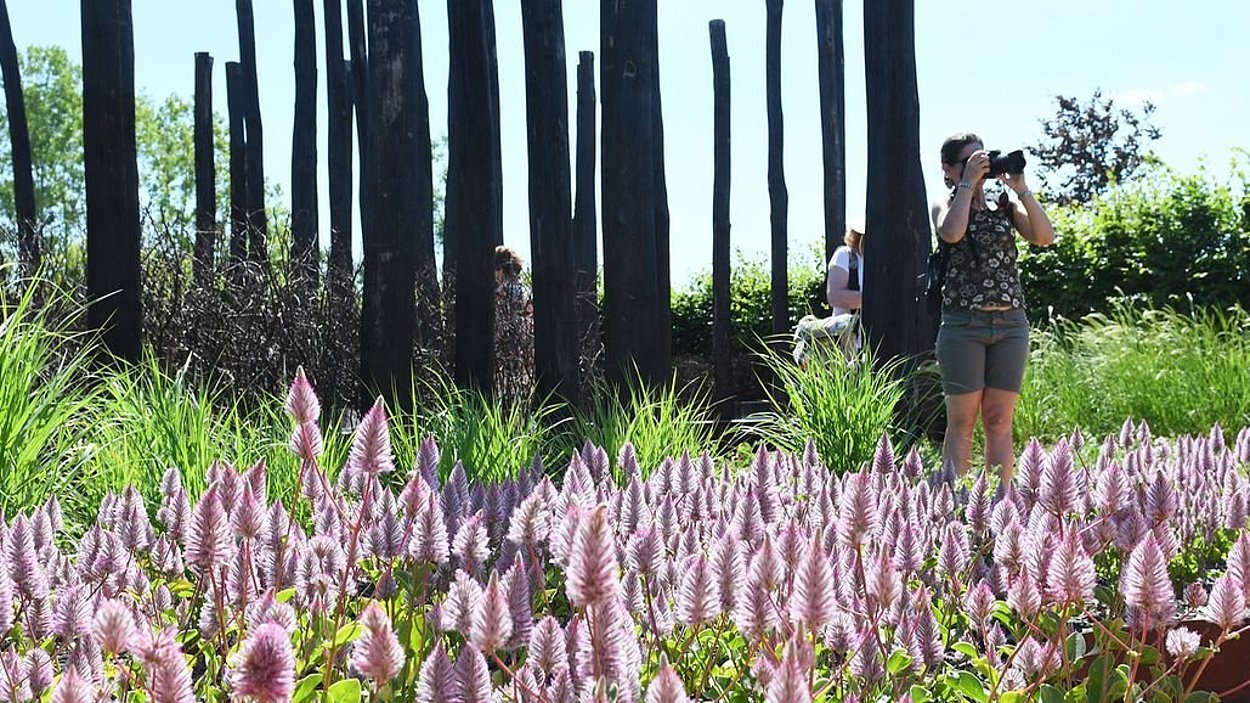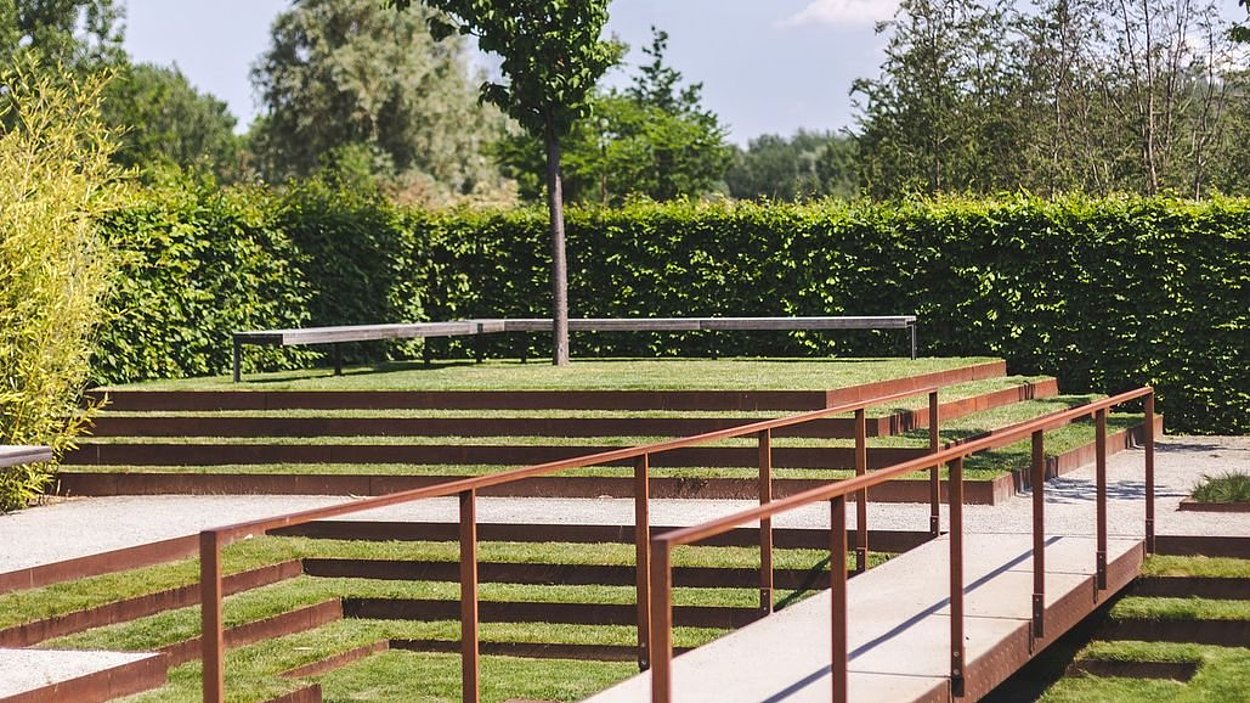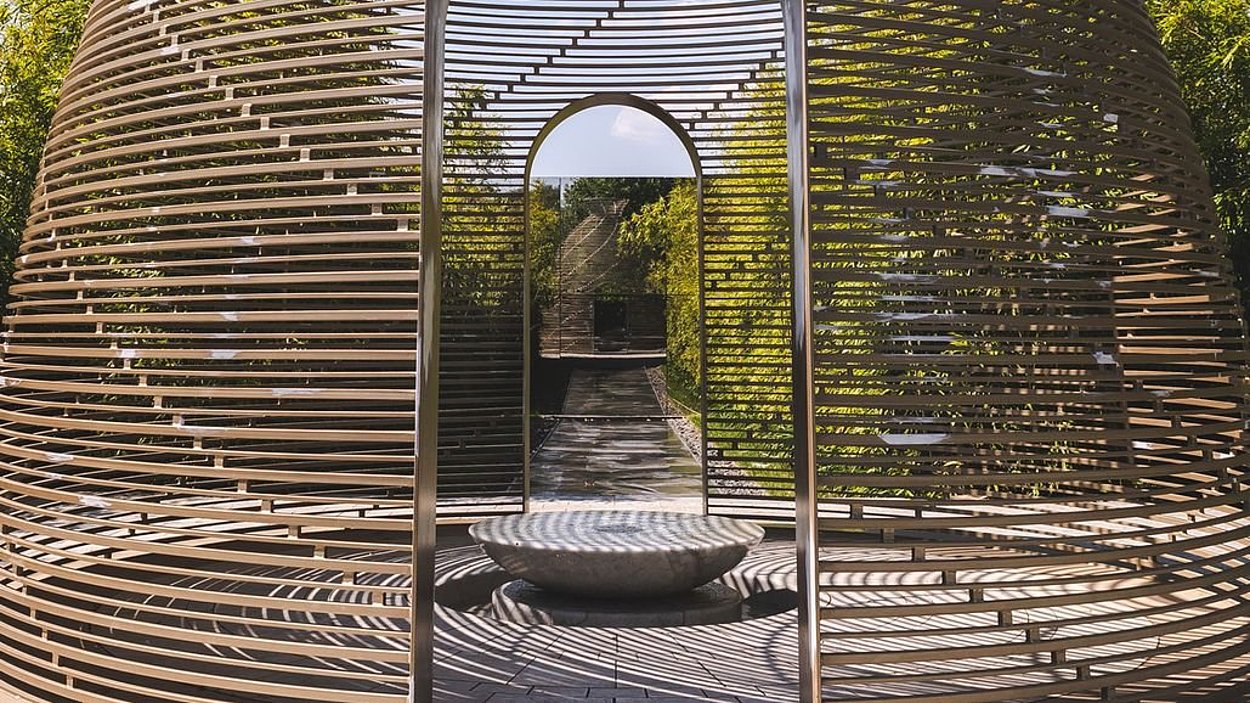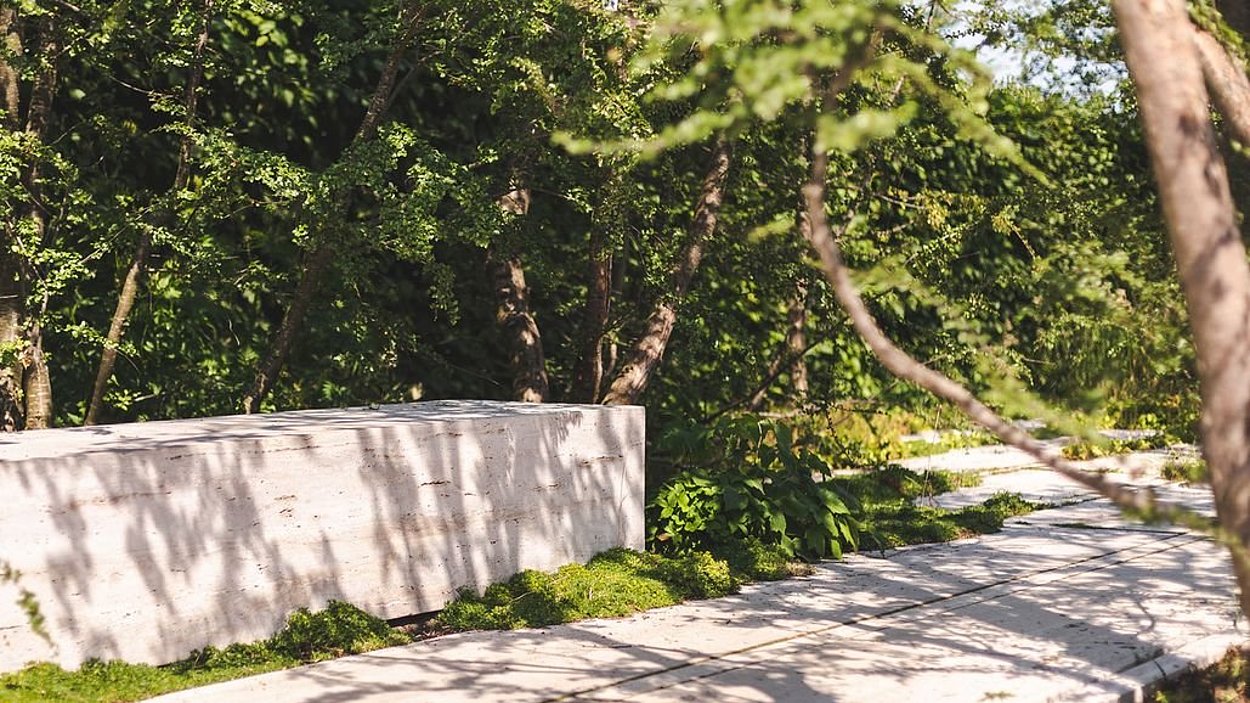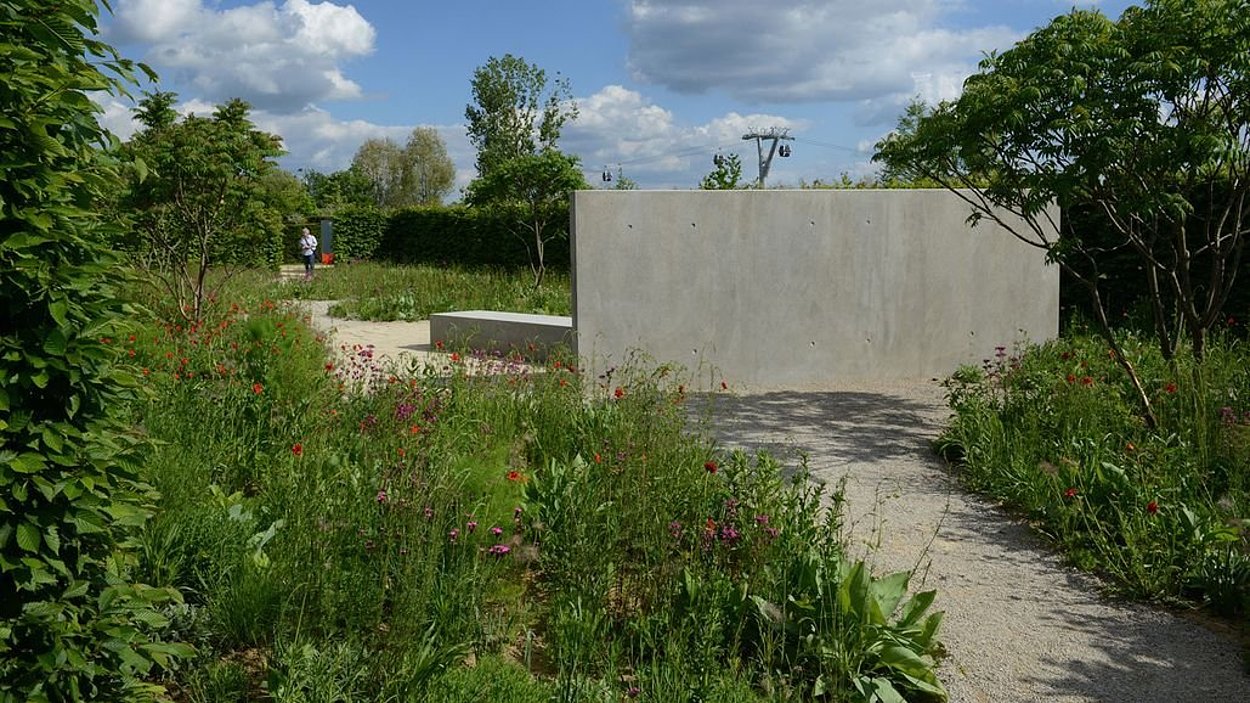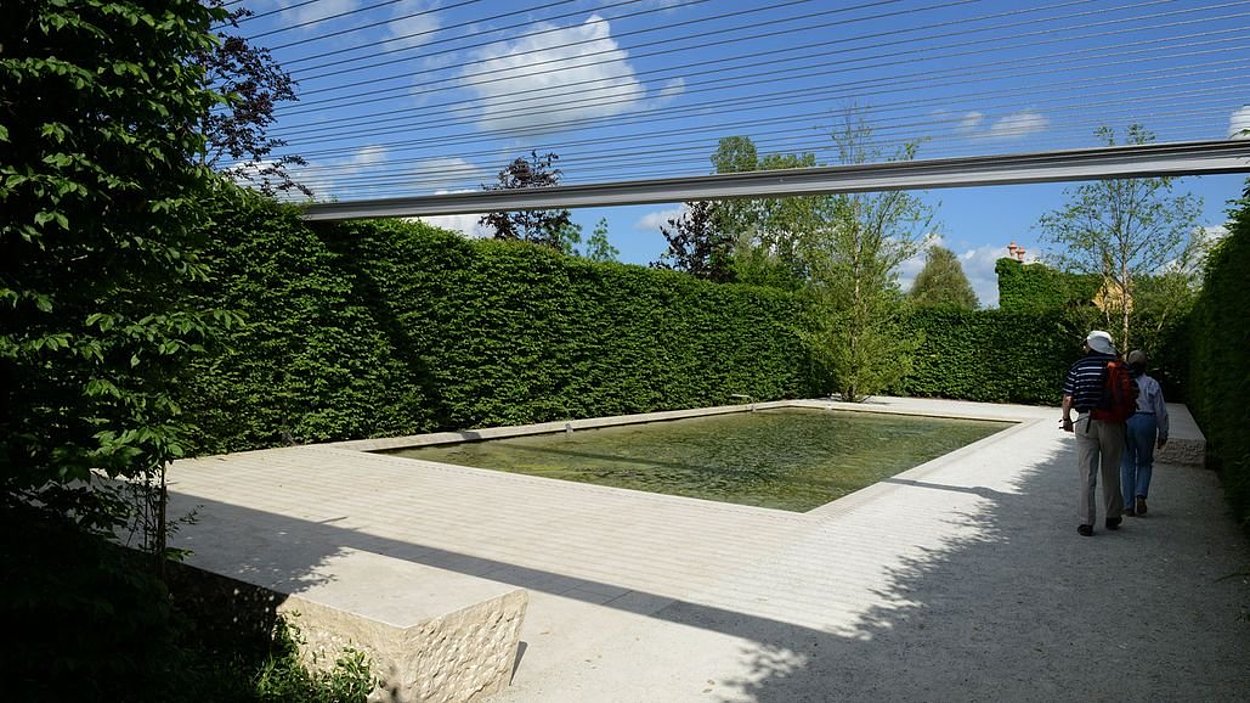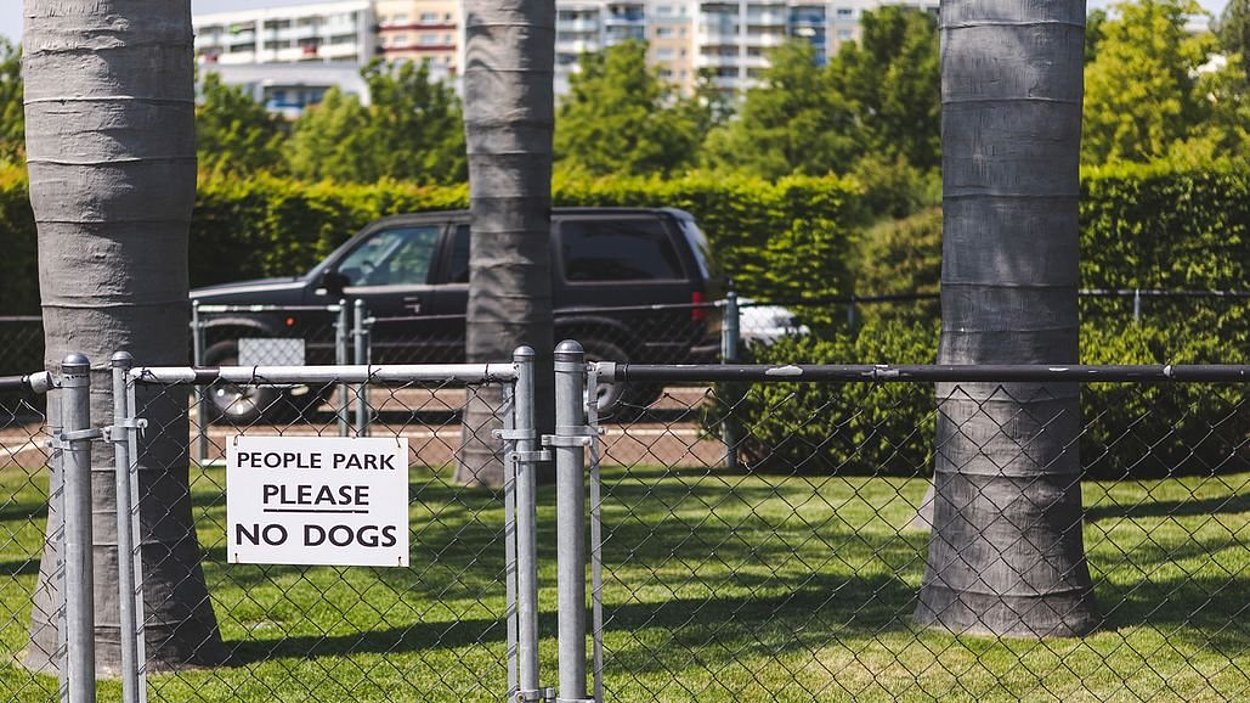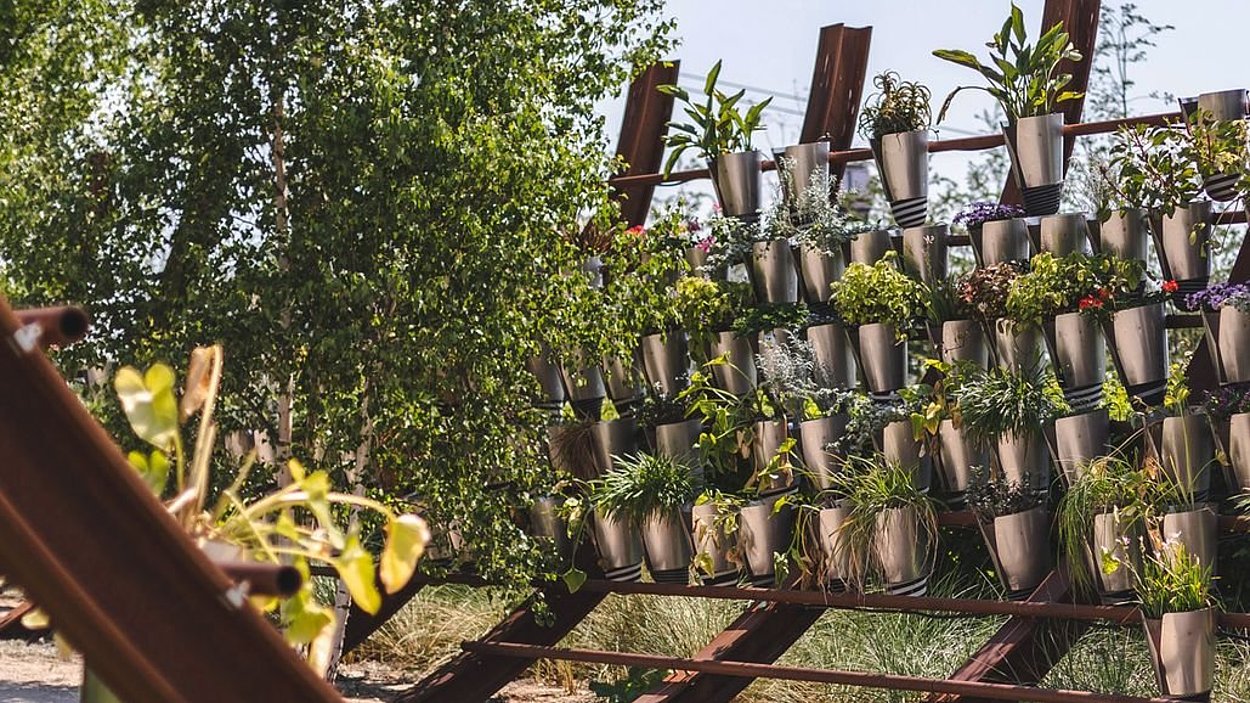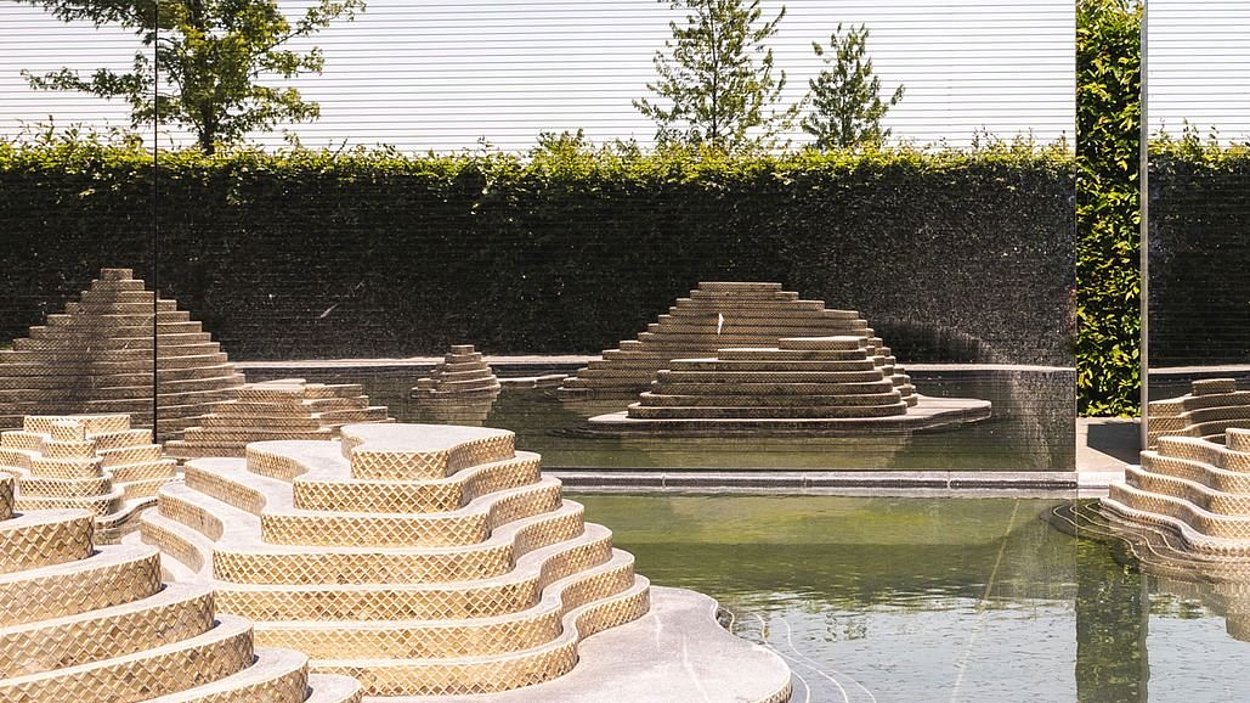South Afrika
Freedom and Borders
This installation depicts both the tragedy and the potential of human history. The interconnectedness of the world has given us a prosperity that continues to astonish us. But the goods that wandered from continent to continent in the bellies of large ships were not always gifts or merchandise, but were often stolen goods during the time of colonialism. Often, possession for one person meant loss for another. In this respect, the work of the South African architects GREENinc is a critical but hopeful exploration of the concepts of freedom and borders, proximity and distance.
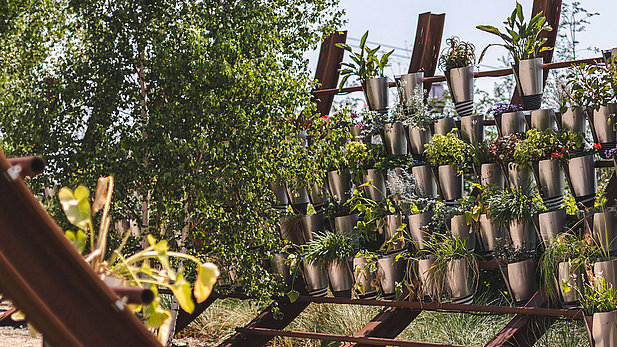
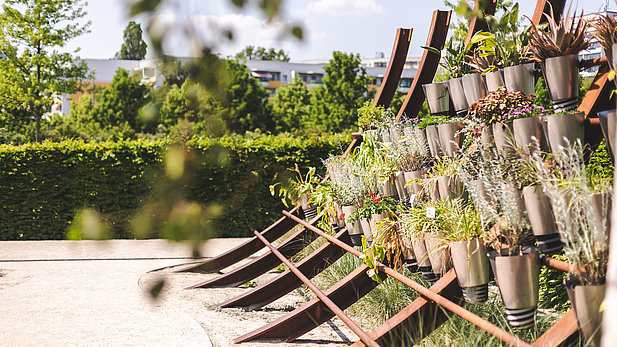
A South African Bouquet
Since the first trading voyages of the Phoenicians around 600 BC, goods have been transported in ships around the world. In the South African garden cabinet, this exchange is symbolised by a metal hull with rolled copper pots attached to the rusting poles. The pots hanging in the trellis represent containers of precious gifts from Africa, they tell of giving, sharing and crossing borders. Each year, many different flowers of Africa, familiar to us as indoor plants or summer flowers, bloom here. Fine dune grasses grow between the metal rods of the ship's hull and tell the story of South Africa.
The open design of the cabinet also gives you an insight into the installation from the outside. This interaction with the environment is intended to attract your attention and invite you to take a closer look inside. Ultimately, design is about overcoming boundaries.
GREENinc
For GREENinc, the uniqueness of their projects is very important. For this reason, the company often works in interdisciplinary collaboration with other specialists. The designs are characterised by their contemporary style, for which the office is known beyond the shores of Africa. For projects such as the Freedom Park in Pretoria, the practice was honoured by the Institute for Landscape Architecture in South Africa and at the World Architecture Festival in Barcelona, among others.
